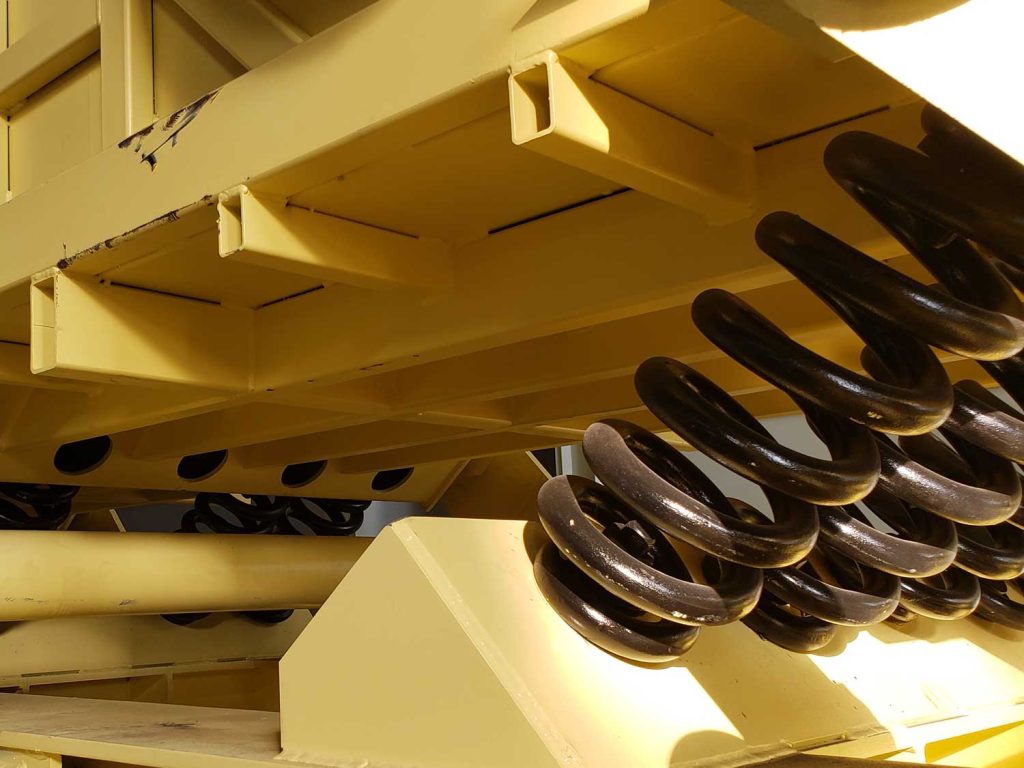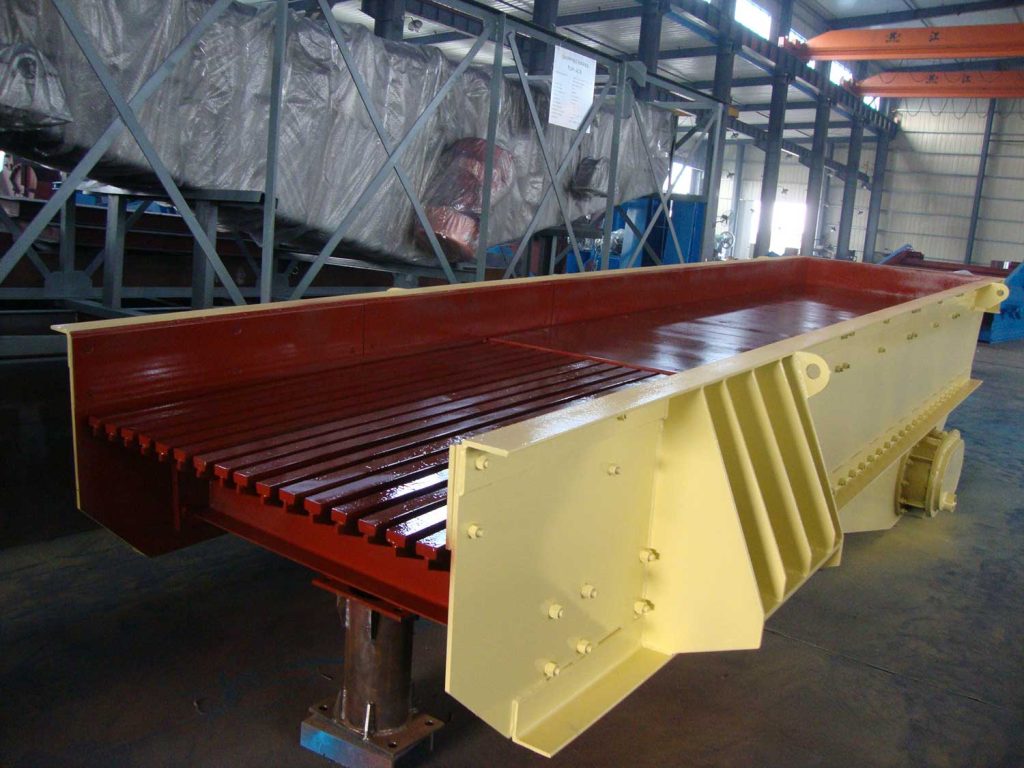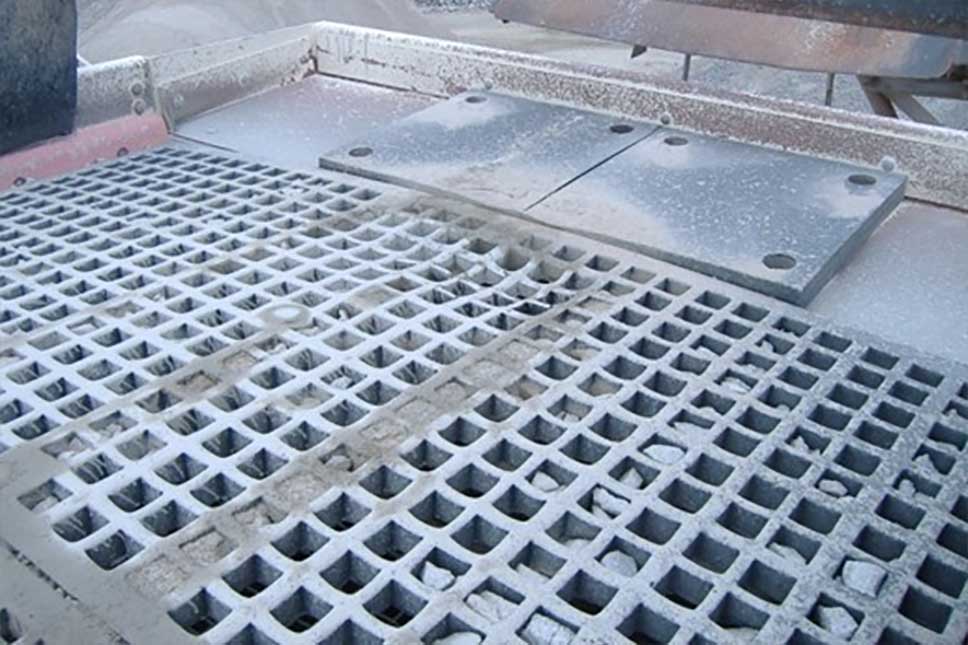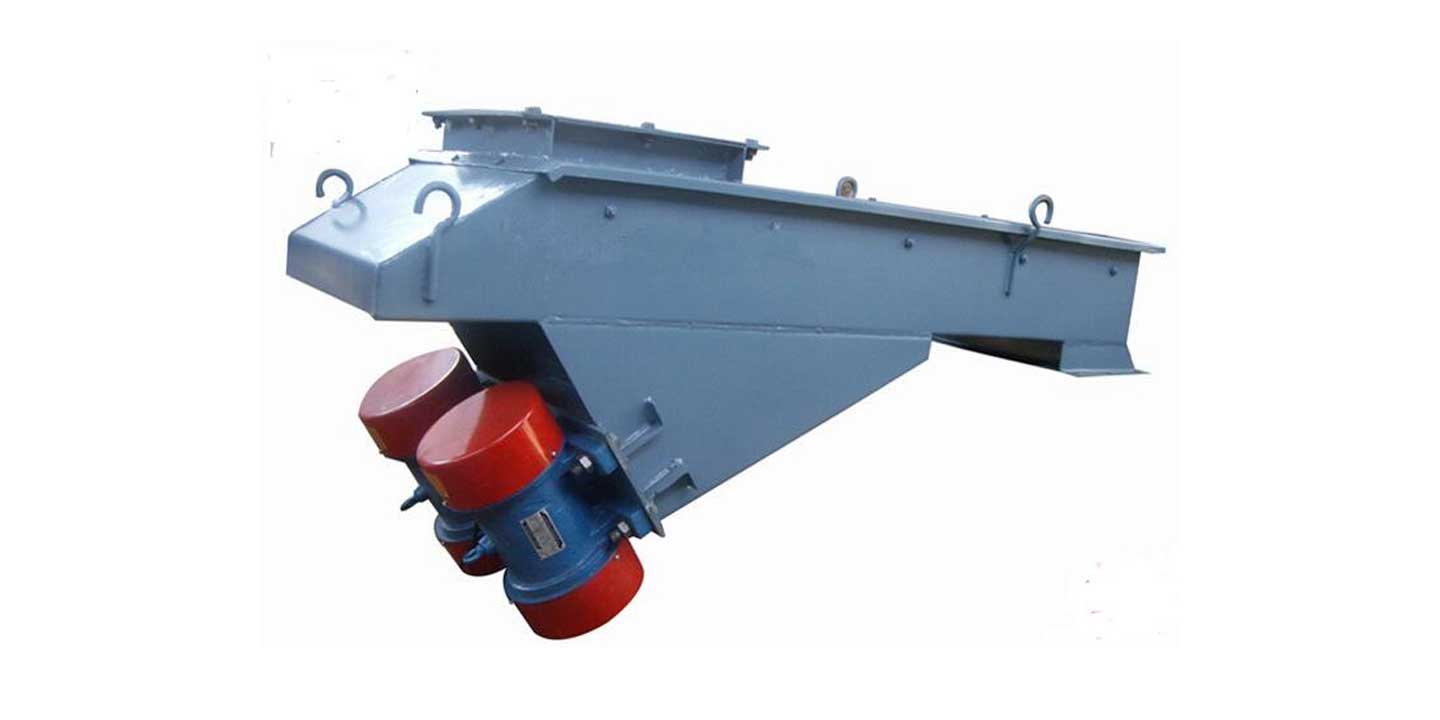Vibrating conveyors and vibrating feeders are machines that use vibration to make materials produce periodic throwing motions to complete the forward conveying of materials.
Vibrating conveyors and vibrating feeders are suitable for conveying massive and powdery materials, such as: chemical raw materials and products, food, glass raw materials, ore, mineral powder, coal, molding sand, etc.
Difference 1#: Vibration mechanism
- Vibrating conveyors can be divided into two types according to the excitation mechanism: mechanical type and electromagnetic type. Among them, the mechanical type can be divided into two types: elastic link type and inertia type; according to the number of participating vibration components, it can be divided into three types: single body, double body, and multi-body.
- There are three types of excitation sources for the vibrating feeder: electromagnetic, motor, and biaxial vibrator.

UHM Vibratory Machinery – Experts in Vibratory Conveyors. UHM Has 20+ Years of Experience in Conveyor Vibration Systems, Vibrating Screening, Vibrating Fluid Bed Dryer, and Vibrating Feeder. More Detail: Vibrating Conveyor, Conveyor Vibration System – UHM China
Difference 2#: Working principle
- The vibrating conveyor uses the reciprocating vibration of the conveying trough to convey the material. There are two ways of conveying the material in the trough, which is the sliding motion and the throwing motion. As long as the appropriate kinematic parameters are determined, such as amplitude, Frequency, vibration direction angle and installation inclination angle, so that the material in the tank can be transported by sliding or throwing.
In order to overcome the gravity of the material particles during the vibration conveying process, the upward vertical acceleration must be greater than the value of the gravity acceleration; while the gravity of the material particles plays a leading role in the vibrating chute conveying process, it is necessary to overcome the frictional resistance between the material and the trough, the material slides forward. - The vibrating feeder is driven by electromagnetic or motor to generate centrifugal force, which makes the movable parts such as screen box and vibrator perform forced continuous circular or approximate circular motion. The material is thrown continuously on the inclined screen surface with the screen box, and the block or granular material is evenly, regularly and continuously fed from the storage bin to the receiving device.
Difference 3#: Application
- The vibrating conveyor can carry out long-distance transportation;
- The vibrating feeder is used in the feeding and receiving device.
Difference 4#: Features of vibrating conveyor
- Multi-point feeding and multi-point discharge can be used during transportation.
- Can quantitative feeding, batching, automatic calculation.
- Good sealing performance. The conveying trough can be made into a circular tube shape or a rectangle, and the inlet and outlet of the material adopt a flexible and airtight connection method, which can prevent the material from polluting the environment, and can also prevent the environment from polluting the material. Therefore, toxic, harmful and materials that need protection can be transported.
- Hot material can be conveyed. When the steel sealed conveying trough is air-cooled, it can transport materials at 500 °C, and it can transport materials below 1000 °C with circulating water cooling.
- During the conveying process, various technological requirements can be realized, such as dehydration, drying, cooling, screening, heating, heat preservation, mixing and other technological processes.
- The structure is simple, the manufacture is easy, the installation and adjustment are convenient, the maintenance workload is small, the energy consumption is small, and the operation is safe. The electromagnetic vibrating conveyor is also easy to realize automatic control.
- The vibrating conveyor is not suitable for conveying sticky and wet powdery materials, and the upward conveying angle generally does not exceed 10°.
Difference 5#: Features of vibrating feeder
- Simple structure, uniform feeding, good continuous performance, adjustable excitation force;
- The electrical control adopts half-wave rectifiers, which can adjust the feeding amount steplessly, and can be used in the production process of automatic control to realize the automation of the production process.
- The electromagnetic vibrating feeder has no rotating parts, no lubrication, simple structure and convenient maintenance.
- Change and control the flow rate at any time, convenient and stable operation – The electromagnetic vibrating feeder can change and open and close the material flow instantaneously, so the feeding has high precision.
- During operation, the material is slightly thrown, and the wear of the chute is very small.
- Low noise, low power consumption, good adjustment performance, no flushing phenomenon
- If the closed body is used to prevent dust pollution, the vibration is stable, the work is reliable, and the service life is long;
- The trough made of alloy steel plate can be used to transport high temperature, severely worn and corrosive materials, etc.

Experts in Vibrating Grizzly Screen. Have 30+ Years of Experience in Grizzly Feeder.
Hot Sale High-Quality Vibrating Grizzly Feeder Online from China. More Detail: Best Vibrating Grizzly Screen/Grizzly Feeder – 2023 Guide
Difference 6#: Features of ZSW Grizzly Feeder
- Linear motion trajectory, stable vibration;
- Special grid design to prevent material clogging;
- Grille gap is adjustable.
- Reliable work, low noise, low energy consumption, no flushing phenomenon
- Long life, easy maintenance
- Light weight, small size, convenient equipment adjustment and installation, good overall performance
- When the closed structure body is used, dust pollution can be prevented.
- The dual-axis vibrator is adopted to vibrate in a straight line, and the screening process is completed while feeding, which improves the utilization rate of the equipment and reduces the cost;
- It can continuously and evenly feed the coarse crusher and coarsely screen the material at the same time;
- Optional frequency conversion speed regulation motor, adjust the frequency, thereby changing the output, easy to control the feeding amount, no need to start the motor frequently.
Difference 7#: Features of GZT Grizzly Feeder
- There are many kinds of products, which can be individually designed and manufactured according to user requirements;
- Stable vibration, reliable operation and long service life;
- The exciting force can be adjusted, the flow rate can be changed and controlled at any time, and the adjustment is convenient and stable;
- The vibration motor is the excitation source, with low noise, low power consumption, good adjustment performance, and no rushing phenomenon;
- Simple structure, reliable operation, convenient adjustment and installation;
- Light weight, small size, easy maintenance, and can prevent dust pollution when using a closed structure body

